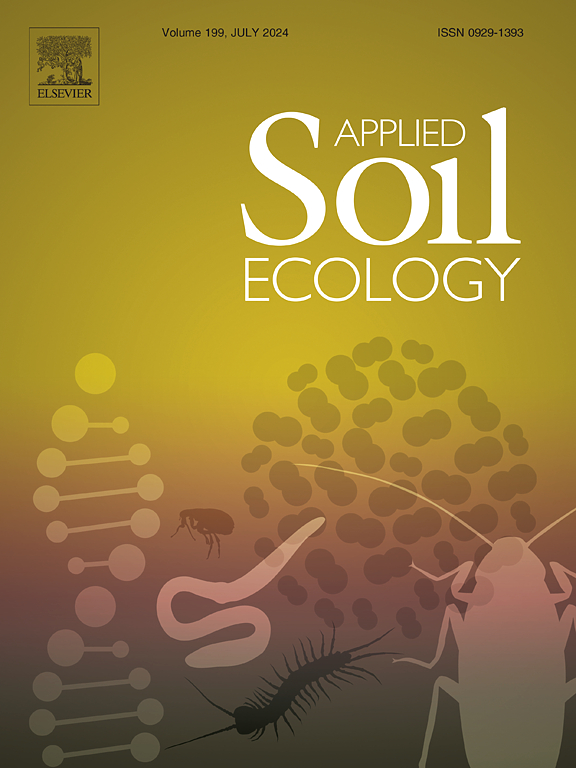Drought and N deposition impact roots and ectomycorrhizal colonisation of European beech down to deep soil layers
IF 4.8
2区 农林科学
Q1 SOIL SCIENCE
引用次数: 0
Abstract
The impact of nitrogen (N) deposition and drought on roots and ectomycorrhizal fungi (EMF) colonisation in European beech (Fagus sylvatica) were investigated up to a soil depth of 100 cm across 21 long-term study sites. The study encompassed gradients of N deposition from 18 to 50 kg N ha−1a−1 and drought conditions from −52 to 188 mm minimal site water balance (SWBmin). In-growth mesh bags (n = 1050) were used to determine EMF colonisation over a period of 12 months. We discovered vital roots including EMF colonisation down to the maximum soil depth of 100 cm. Notably, one-third of colonised roots were in the subsoil below 40 cm soil depth, emphasizing the role of deep soil layers. Increasing N deposition significantly altered root architecture, reducing root length by a factor of 10, root tip abundance by a factor of 2, and EMF colonisation by a factor of 2.5. Drought suppressed EMF colonisation, decreasing it by a factor of 4 to well-watered sites. A structural equation model (SEM) revealed both direct and indirect pathways of drought and N deposition on root EMF colonisation and tree nutrition. Surprisingly, mycelial growth was detected at 100 cm depth in most incubated mesh bags, underscoring the critical role of deep soil horizons in sustaining European beech under increasing drought stress.
求助全文
约1分钟内获得全文
求助全文
来源期刊

Applied Soil Ecology
农林科学-土壤科学
CiteScore
9.70
自引率
4.20%
发文量
363
审稿时长
5.3 months
期刊介绍:
Applied Soil Ecology addresses the role of soil organisms and their interactions in relation to: sustainability and productivity, nutrient cycling and other soil processes, the maintenance of soil functions, the impact of human activities on soil ecosystems and bio(techno)logical control of soil-inhabiting pests, diseases and weeds.
 求助内容:
求助内容: 应助结果提醒方式:
应助结果提醒方式:


